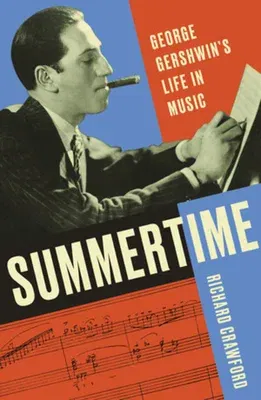New York City native and gifted pianist George Gershwin blossomed as an
accompanist before his talent as a songwriter opened the way to
Broadway, where he fashioned his own brand of American music. He
composed a long run of musical comedies, many with his brother Ira as
lyricist, but his aspirations reached beyond commercial success.
A lifetime learner, Gershwin was able to appeal to listeners on both
sides of the purported popular-classical divide. In 1924--when he was
just twenty-five--he bridged that gap with his first instrumental
composition, Rhapsody in Blue, an instant classic premiered by Paul
Whiteman's jazz orchestra, as the anchor of a concert entitled "An
Experiment in Modern Music."
From that time forward his work as a composer, pianist, and citizen of
the Jazz Age made him in some circles a leader on America's musical
scene. The late1920s found him extending the range of the shows he
scored to include the United Kingdom, and he published several articles
to reveal his thinking about a range of musical matters. Moreover,
having polished his skills as an orchestrator, he pushed boundaries
again in 1935 with the groundbreaking folk opera, Porgy and Bess--his
magnum opus.
Gershwin's talent and warmth made him a presence in New York's musical
and social circles (and linked him romantically with pianist-composer
Kay Swift). In 1936 he and Ira moved west to write songs for Hollywood.
Their work was cut short, however, when George developed a brain tumor
and died at thirty-eight, a beloved American artist.
Drawing extensively from letters and contemporaneous accounts, acclaimed
music historian Richard Crawford traces the arc of Gershwin's remarkable
life, seamlessly blending colorful anecdotes with a discussion of
Gershwin's unforgettable oeuvre. His days on earth were limited to the
summertime of life. But the spirit and inventive vitality of the music
he left behind lives on.

